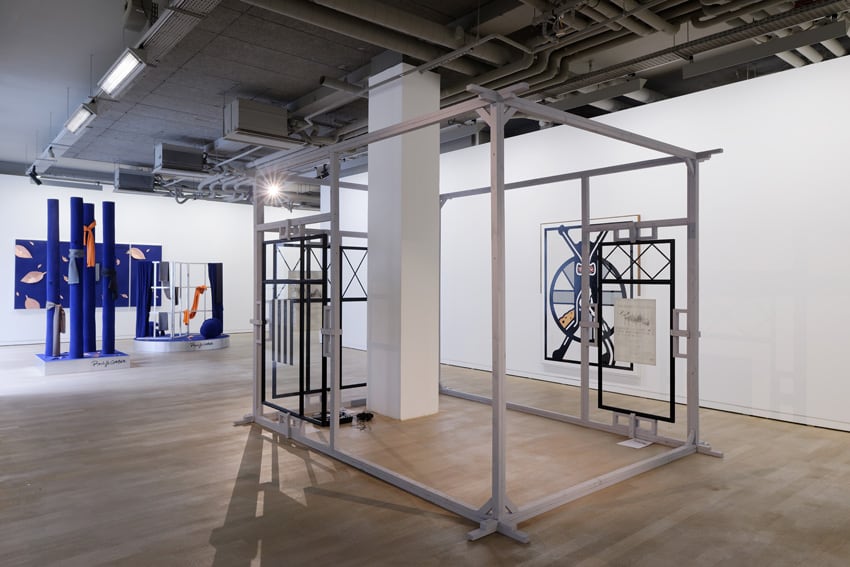
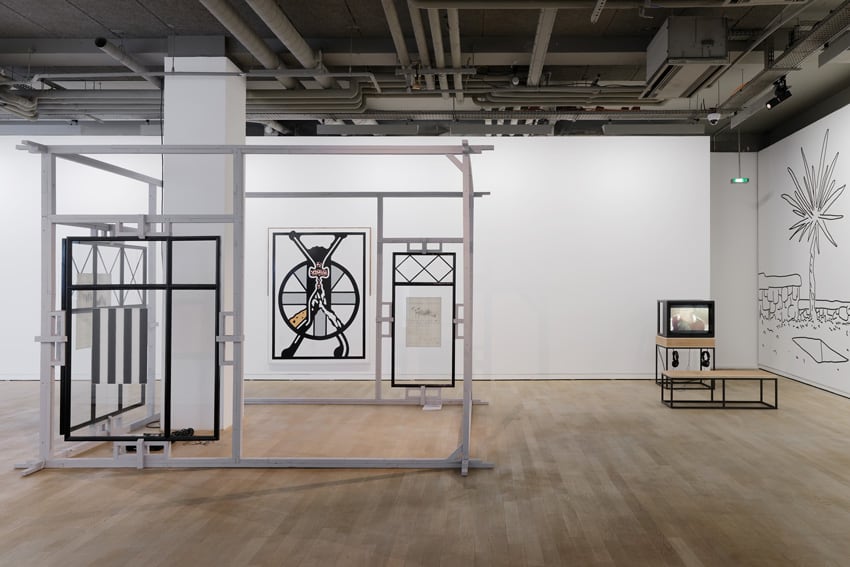
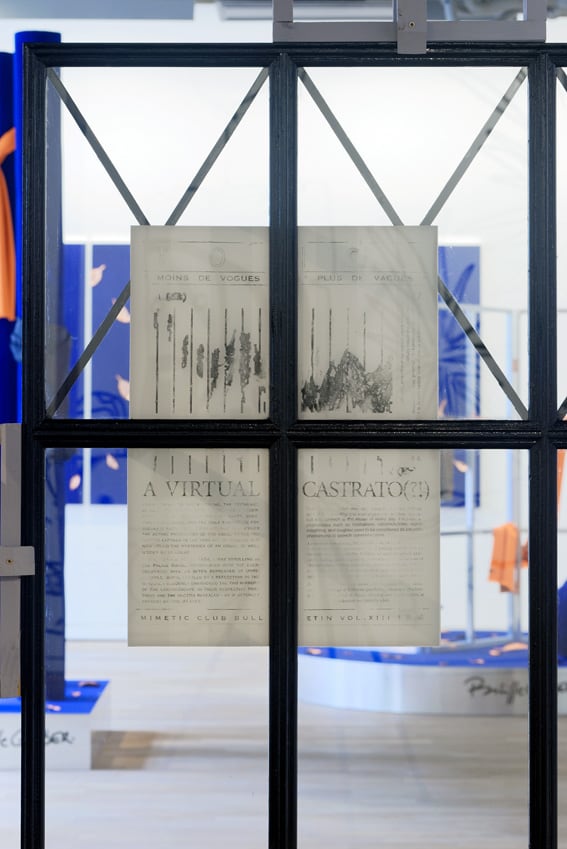
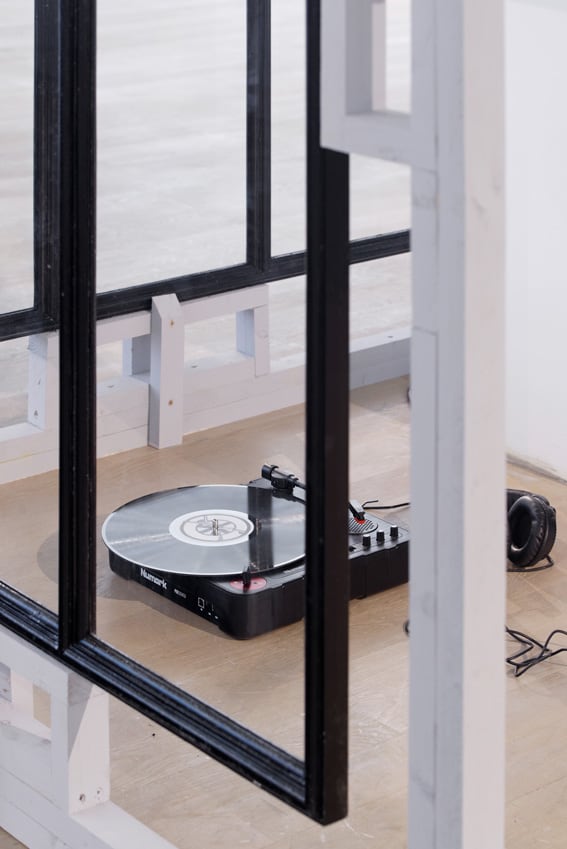
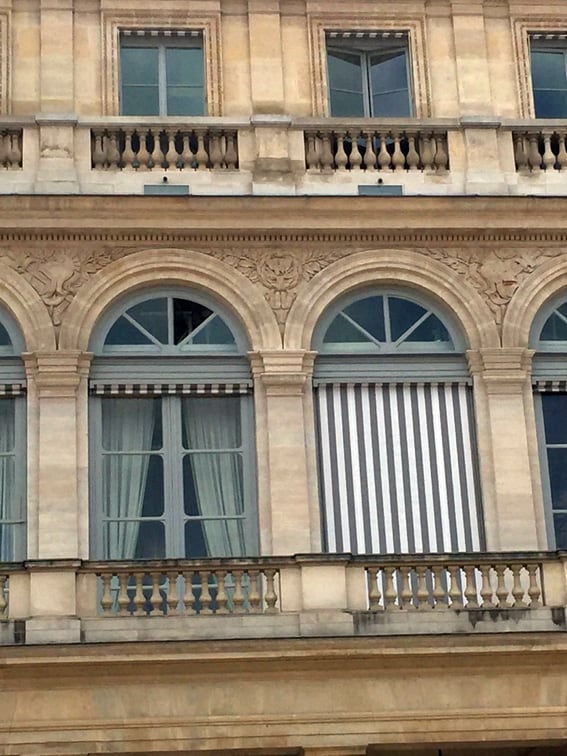
I met Thomas Jeppe at the famous Place de la Republique in Paris, under blue skies. He brought me to the Square du Temple, where Marcel Proust would have strolled a century ago. We sat down on a bench watching people passing by, the French way… We had met to talk about his nomination for the Prix Fondation d’Entreprise Ricard.
Founded in 1999, the Prix Fondation d’Entreprise Ricard is given annually to an emerging artist on the young French art scene, and presented as part of an exhibition by an independent curator. Awarded by a jury of art critics and collectors (friends of the Centre Pompidou, the Palais de Tokyo, the Jeu de Paume and FRAC Nord-Pas-de-Calais), the Prize consists of the purchase of a work from the winner – for a minimum of 10,000 Euros – to be donated to the Centre Pompidou as part of the permanent collection of the Musée National d'Art Moderne. I was curious as to how Thomas, as an Australian artist and especially one newly-based in Paris with no exhibition in France under his belt, ended up on the list of nominees.
“The curator Anne-Claire Schmitz was familiar with a few of my previous projects, and she invited me to participate in this show as a relative outsider, perhaps as a foil to the better-known artists on the list. The situation had this embedded ambivalence, being an exhibition with a competitive layer over the top. Reflecting this ambivalence, I wanted to make something a bit more antagonistic, something perhaps less likeable, in order to counteract this competitive agenda.
Thomas has a kind of distance, or perspective when viewing not only his own work, but the context around it.
Thomas has set up his Parisian studio in the DOC, a not-for-profit organization - an artist collective - in the heart of Paris that fosters the sharing of artistic ideas, knowledge, and techniques with the aim of promoting and spreading contemporary creations. That this is the kind of space that Thomas has chosen to settle his studio says a lot about his candour. Thomas took me around DOC, knocking on some random studio doors, having a chat with the artists that we disturbed. Thomas was handing out invitations for his partner's show in Versailles, and he got very excited to show me the DOC’s litter of kittens.
I thought a lot about the title that Anne-Claire Schmitz has chosen for the Prize exhibition. Les Bons Sentiments is a French expression meaning to be benevolent, caring. The direct translation would be ‘The Good Feelings’ - yet the contemporary use of the phrase implies ulterior motives; one intention on the surface and another underneathI asked Thomas about the idea of benevolence in his work, more generally and for this show especially.
“I was under the impression that the kind of work I had been making for many years was more or less Pop, generally accessible and vaguely slick in some way. But then, it always came from a research fundament, which is not necessarily an attractive position for art making, and I needed this thread to connect back to ideas generated in cultural studies and publishing where I started. At a certain point these back-stories became the dominant feature of the works and in the end it became clear that it was not Pop at all, but some errant gestures towards the mediation of cultural histories, more a crumb-trail of arcane curiosity than a group of polished objects. For the Ricard exhibition I wanted to go further into this, to address some aspects of Paris and to use these back-stories to plot a personal map of the city.”
Indeed, Thomas Jeppe’s work is complex, somewhat intimidating. But the experience of his whole installation at the Fondation Ricard is a feeling of safety, separating you from time and space; the bunker idea.
For the exhibition, Thomas constructed the frame of a small room with window sculptures that are made to replicate those in the Jardin du Palais Royal. Inside the room is a dub plate record and a single record player with a pair of headphones.
“The installation is a hermetic zone within the group exhibition. There is something very concrete about place with this record; only a single copy was pressed, with the intention that it can only be heard in this space, defined by this frame and by these windows. The structure is also a small, sort of pseudo-architecture within the architecture of the place, a cage for the refraction of ideas.”
The glass cage is enough, protects us. The symbol, the painting on the wall facing us becomes our guru, the parallel songs our mantra. Mimetic Club Bulletin our consciousness, our confession, our propaganda.
The Mimetic Club Bulletin is a work that Thomas has been producing in various iterations for five years now. It’s an A4 page that is photocopied and given out by hand, like a club newsletter, made to share with people connected to music and dancing. “It’s made as an edited patchwork of quoted texts, a sort of an excerpt of an essay designed in a traditional newsletter format and delivered hand to hand. This physical aspect is important.”
The Prix Fondation d’Entreprise Ricard asked Thomas to make a “showcase of your practice”, and so, along with the installation and recording, he obliged the foundation to become the distributors of a new issue of the Mimetic Club Bulletin. The usual hand-to-hand style of distribution has been replaced with two big piles, one in French, one in English, that visitors can take. The structure of the Ricard exhibition brought with it the material support and resources to photocopy the bulletin “infinitely, if I wished to.”
Gilles Chatelet (1944-1999), French philosopher and mathematician, became the central figure of this issue, taking cues from his polemical essay To Live and Think Like Pigs: Envy and Boredom in Market-Economy Democracies, in which he denounced liberalism. “Alongside Chatelet's cutting analysis of neoliberal subjectivity, with predictions made in 1998 which we see realised in 2017, he was an important figure for the night club scene in Paris. His unified thinking around these two logics are testament to a great intellectual sensitivity” The French translation of the Bulletin, made bilingual for the first time, was necessitated by the context: “no reader should be alienated from the content.” But, Thomas explained to me, there is also an ‘ethical twist’ to the translation.
“It became a kind of a logic play trying to link this heavy new edit from Chatelet's translated English edition to its roots in the original French edition, word by word, with the exact syntax. But this came from a real desire for verisimilitude, to concoct a sense of ‘the legitimate thing’, a sentiment of reconstruction that fuels the show.”
The record that sits on the record player inside of the installation frame is a project reviving Gilles Chatelet’s voice.
The headphones on, a voice, some voices, humanoids humming arise. The sound is becoming creaky and mystical.
For the production Thomas collaborated with Low Jack, a Paris-based electronic music composer and DJ who is undoubtedly representative of a certain direction of French and global electronic music. Low Jack had been introduced to Thomas through the French techno-esoteric label Collapsing Market, for whom Thomas designed a record cover. The record Is an 18 minute composition made with a program first developed in the 1980s by IRCAM, the Centre Pompidou's sound research department, designed to emulate the voice of a castrato. Chatelet's sarcastic letter to “Young Nomads” would be vocalised through this framework of impotence.
“I kept returning to the state of contemporary club culture in Paris, its parallels and ruptures with the club scene of Chatelet's time. Low Jack represents one face of this scene, and I wanted the the words to come from another end, a counterpoint that could illustrate the breadth of the field.” So, on Thomas’ invitation, RnB singer Bonnie Banane became the incarnation of Gilles Chatelet’s voice.
The voices from beyond the grave overhung by the cosmic swaying and squeaking invade me. Soothing, frightening, appealing. No matters what it says. A truth is diffused to slip directly into us. We let ourselves be rocked, go. The larynx is extinguished, the sound waves are stronger. A spell.
In combining these texts, the sounds, the sculptures, the exhibition is “something of a gesture against fragmentation. Its source points are so fragmented and refracted across space and time, so the idea is to harmonize them for a moment, to grant them coherence. A gesture against the destructive reality, ideas, feelings, moods and people as well, that would tear this constellation apart. Because it’s about this singular sentiment at its core.”
It is a complex work. Layer by layer Thomas Jeppe looks to communicate, to revive a voice across different strata of generations. Prophetic, perhaps. Intimidating? We just have to let it go.
Pauline Rotsaert is an Australian-based French emerging arts writer and curator.
